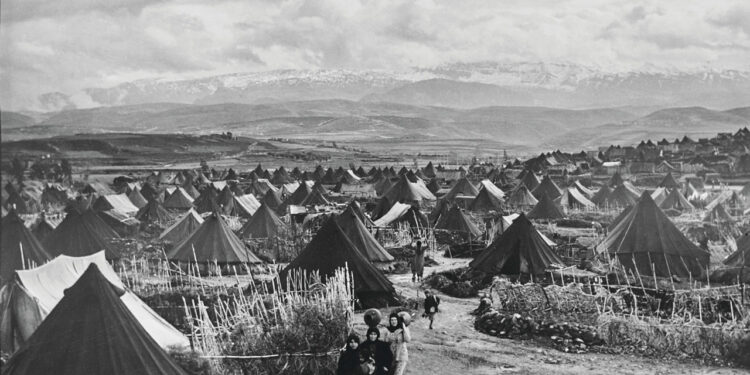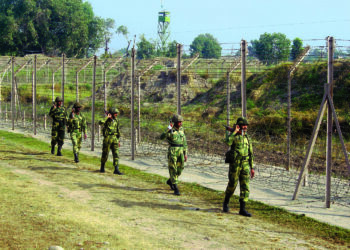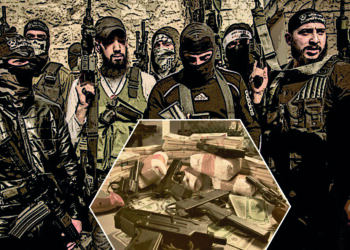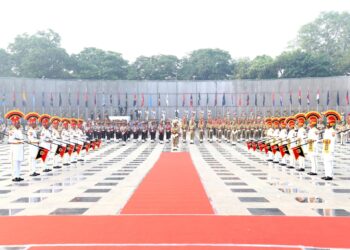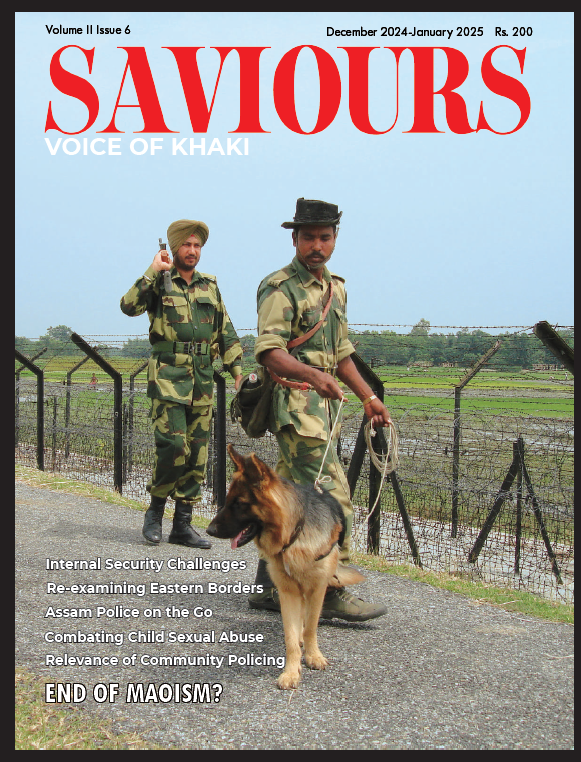As this is written, the contours of Trump administration’s “solution” to the Palestinian refugee problem with particular focus on Gaza are not clear except for Israeli Prime Minister Benjamin Netanyahu’s condescending remarks in Washington DC on 7 July that US and Israel are working with other countries “who would give Palestinians a better future” suggesting that the Gaza residents could move to neighbouring countries.
On 9 July 2025, the UN Office for Humanitarian Affairs (OCHA) estimated that the civilian deaths in Gaza due to Israeli operations since 20 October 2023 have reached 57,680, which includes 24,818 men, 17,121 children, 9126 women and 4137 elderly persons. In addition, 1,37, 409 were severely injured and are getting only basic medical treatment, since most of the Gaza hospitals are non-functional due to heavy Israeli bombing. In addition, OCHA has been warning of mass famine due to Israel’s deliberate action of preventing food and medical aid from reaching Gaza.
The Office of the United Nations High Commissioner for Human Rights (OHCHR) revealed on 11 July that 798 Gaza residents who were struggling to get food aid were killed during the previous 6 weeks. Meanwhile, the US government “sanctioned” UN Human Rights Council’s special rapporteur Francesca Albanese, who had listed Israel’s excesses in the war, accusing US multinationals of exploiting Gaza for their commercial interests.
The sad part of the tragedy is that, except for the United Nations (UN), none, including Arab nations, seem to be concerned about this colossal human tragedy affecting Palestinian refugees, except for issuing bland statements.
Who are Palestinian Refugees?
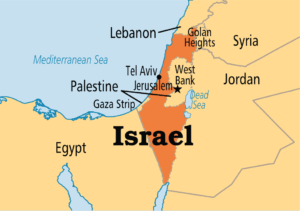
United Nations Relief & Works Agency for Palestine Refugees in the Near East (UNRWA), which was set up in 1950, defines Palestine refugees as “persons whose normal place of residence was Palestine during the period 1 June 1946 to 15 May 1948, and who lost both home and means of livelihood as a result of the 1948 conflict.” In 1950, there were about 750,000 Palestinian refugees. Currently, UNRWA caters to about 5.9 million Palestinian refugees who live in 58 recognised Palestinian refugee camps in Jordan, Lebanon, the Syrian Arab Republic, the Gaza Strip, the West Bank, and East Jerusalem.
In 1967, Israel waged the “6-Day War”, violating the UN Palestine Partition Plan and map of boundaries, which was adopted by the UN General Assembly on 29 November 1947 as Resolution 181 (II), creating the new Jewish State of Israel within the then existing Arab Palestinian State.
Israel also breached the 1949 Armistice Agreements for ending the 1948 Arab-Israel War with Egypt, Lebanon, Jordan and Syria, by forcibly wresting East Jerusalem, the West Bank and Gaza. Since then, Israel has been developing illegal Jewish settlements on Arab lands, forcibly evicting Palestinians who are rendered refugees. UNRWA established ten more Palestinian refugee camps to house those evicted.
Origins of this Problem
The end of the First World War is a watershed moment for the present Middle East crisis. The main actors involved were the Ottoman Empire, which lost its vast territory, and the British and French colonial powers, who seized lands and influence, sharing it with the Hashemite family, which traces its origins to Hashem Ibn Abd Manaf, the great-grandfather of Prophet Muhammad.
One of the best books describing the problem is “Paris-1919-Six Months that changed the world” by Oxford historian Margaret MacMillan. It explains how the “Big Four powers” (America, Britain, France and Italy) had met in Paris for 6 months after the First World War “that had started in 1914 over a squabble for power and influence in the Balkans and which had drawn all the great powers, from tsarist Russia in the east to Britain in the west, and most of the smaller ones”. Among the world’s most intractable problems, which could not be solved in 1919 or even by 2025, was the relationship between the Arab –Palestinian nations and the emerging Jewish homeland in the region.
Search for a Jewish Homeland
The Jewish “search” for a homeland started meekly and very submissively in 1897, unlike the present situation, when American support for Israel’s hegemony over the Middle East is strikingly evident.
The story starts in August 1897 when Theodor Herzl, a Viennese journalist, convened the first Zionist Congress in Basel, Switzerland. “Zion” is one of the Biblical names for Jerusalem. On 3 September, he wrote: “At Basel I founded the Jewish State. If I said this out loud today, I would be greeted by universal laughter. In five years perhaps, and certainly in fifty years, everyone will perceive it”. He was expressing his community’s dreams of establishing a homeland after their “exile” during the pre-Biblical days in the 8th Century BCE.
However, the march towards establishing the “homeland” was not easy. On 15 October 1898, Herzl visited Istanbul to plead with the visiting German Kaiser Wilhelm II to recommend to the Turkish Sultan to “seriously consider the proposals of the Zionists”. Jerusalem was then under Ottoman rule. Kaiser mentioned this twice to the Sultan, who would disagree.
Herzl would not give up. On 28 October, he followed the Kaiser to Jerusalem, having heard that he was visiting the Holy Land. He thought he would generate global publicity for the proposal to establish a Jewish homeland. He met Wilhelm twice. On both occasions, the Kaiser was non-committal.
Having failed to persuade the German emperor or Ottoman Sultan, Herzl turned to Britain. He met Lord Joseph Chamberlain, the Colonial Secretary, who suggested that East Africa (specifically Uganda) could be the Jewish homeland. On 13 August 1903, an MOU was issued by the British government to grant land to the “Jewish Colonial Trust Limited” in East Africa. Following this, the Zionist Congress on 26 August 1903, decided to send an investigatory commission to examine this proposal.
However, this led to a vertical split within the diaspora. The 1905 Zionist Congress rejected the “Ugandan” proposal. The leader of the opposing faction was Chaim Weizmann, a British research scientist of Russian origin who became the first President of Israel. It was he who started canvassing for Palestine, which was then “a small backwards province of the Ottoman Empire”.
Weizmann was considered the “father of industrial fermentation” using maize starch. He had developed the acetone-butanol-ethanol fermentation process to produce acetone, which was of great use for making cordite explosive propellants for the First World War. That was how he had met Lloyd George, who was Munitions Minister and later Prime Minister (1916-1922). He had already met Lord Arthur Balfour in 1906, who would become the Foreign Secretary.
In 1914, Britain was in desperate need of large amounts of acetone to “pre-treat” the gunpowder to prevent abrasions to the barrels, which usually released smoke after firing, thereby allowing enemies to identify the location of the guns. Additionally, during that time, Germany, Russia, and Finland held a near monopoly on acetone production, which Britain was unable to access due to the war.
Weizmann wanted nothing for himself as a reward, but merely British “support” for the Zionist homeland in Palestine. Margaret MacMillan quotes Lloyd George saying in his memoirs that this was “the fount and origin of the famous declaration about the National Home for the Jews in Palestine”. This was the “Balfour Declaration” 2 November 1917, which was a letter from Foreign Secretary Balfour to Lionel Walter, 2nd Lord Rothchild, doyen of the Jews, that Britain viewed “with favour the establishment in Palestine of a national home for the Jewish people and will use their best endeavours to facilitate the achievement of this object”.
In fairness to Balfour, the letter also contains the following conditionalities: “it being clearly understood that nothing shall be done which may prejudice the civil and religious rights of existing non-Jewish communities in Palestine”.
Strangely, the Rothchild Archives expose the Machiavellian motive behind this letter. According to this, Britain hoped, in exchange for their support of Zionism, that the Jews would help to finance the growing expenses of the First World War, “which was becoming increasingly burdensome”. Further, the British Foreign Office hoped that the Jews could be “prevailed upon to persuade the United States to join the War”. Lastly, the Declaration deliberately used vague language: “The term’ national home’ was chosen to minimise the Zionist dream, to make Palestine a Jewish state”.
Additionally, Balfour’s letter was addressed to Lord Rothschild, not to Chaim Weizmann, who was the President of the British Zionist Federation in 1917. This was also a British ploy. To understand why, we should study a document in the Rothchild Archives, “Rothchild & Gold”, describing how many occasions the Rothchild family had financially rescued the British government from the public debt during the Napoleonic Wars and later. Additionally, in 1825, the Rothschilds advanced a loan of £ 4 million to the Disraeli government for purchasing shares in the Suez Canal.
Harry Collins and Dominique Lapierre wrote in “O Jerusalem”, an international best-seller, that Israeli rulers ignored Chaim Weizmann’s warning in 1925: “Palestine is not Rhodesia, and 600,000 Arabs live there who… have exactly the same rights to their homes as we have to our National Home”. After 1947, Israel ignored this, and the perennial Israel-Palestinian problem started then.
Now comes the role played by American politicians: The Harry Truman Library documents reveal how the Jews were aided by President Truman, who modified America’s traditional Israel-Palestinian policy in 1945 to favour his party in American elections by going against Roosevelt’s consensus with Britain on the multi-religious character of Palestine and Jewish presence there. In 1917, the Jewish presence there was only 18,000 (3%) out of 6,00,000.
This was the beginning of the American policy of favouring Jews over Arabs due to domestic political considerations, which exists even now under President Donald Trump. Ernest Bevin, then British foreign secretary, had lamented that the “Palestine issue has become the subject of local elections in the United States”.
The Arabs protested when Jewish migration increased their numbers to 83,790 by 1922. To this, Winston Churchill, then Colonial Secretary, gave an assurance that there was no intention to turn Palestine into a Jewish state. However, by 1939, the Jewish population had reached 445,457, which was one-third of Palestine’s population.
How Iran took the Palestinian Resistance Leadership?
Iran-Israel relations were friendly in 1948 when Israel was born. A 2019 Brookings paper states that historically, Persian-Judaic interactions were pleasant, as Iran was the only country that did not join the Muslim majority states in opposing its creation. Also, Iran fitted into Israel’s first prime minister, David Ben Gurion’s “Periphery Doctrine”, which aimed at “a political-security goal of countering Arab hostility through relations with alternative regional powers and potential allies.”
However, things changed when Ayatollah Ruhollah Khomeini assumed power in 1979. The first foreign leader to visit Iran was Yasser Arafat, the leader of al-Fatah, on 17 February 1979. Arafat, who had suffered a crushing defeat in 1970 while attempting to take over Jordan (“Black September”), was looking for a country to support him. However, Lebanon had allowed him to operate on its soil.
This arrangement was based on the 2 November 1969 Cairo agreement, supported by Egyptian President Gamal Abdel Nasser, through which Lebanon permitted the PLO, led by Arafat, to administer 16 official refugee camps under the United Nations Relief & Works Agency (UNRWA), where approximately 300,000 Palestinian refugees lived.
Gradually, these camps became the training ground for revolutionaries of all hues, including Iranian religious revolutionaries such as the Liberation Movement of Iran (LMI), also known as Islamic modernists, the Islamic-Marxist Mujahideen-e-Khalq (MEK), and Islamist followers of Ayatollah Khomeini.
Iran specialists during that era say that the creation of Iran’s Islamic Revolutionary Guards Corps (IRGC) was a result of Arafat’s suggestions through Lebanese PLO leader Anis Naccache, who had led the 1975 Vienna kidnapping of OPEC oil ministers through Carlos, the Jackal.
IRGC is Iran’s leading fighting force now numbering nearly two lakhs with overseas responsibilities through their Quds Force. A Council on Foreign Relations paper updated on 17 April 2024, says that it has regional allies in Bahrain, Iraq, Lebanon (Hezbollah), Palestinian territories (Hamas & Islamic Jihad), Syria and Yemen. The paper quotes a 2020 assessment by the Centre for Strategic and International Studies (CSIS) that “the IRGC has become the most powerful controller of all important economic sectors across Iran” for funding covert activities.
A deeply researched paper dated December 2023 by the “Combating Terrorism Centre” (CTC) at the US Military Academy at West Point states that the IRGC crafts its overseas activities through umbrella groups and joint operations centres.
The first experiment occurred in 1991, when it created the “Ten Resistance Organisation” at the Tehran-sponsored “World Conference in Support of the Islamic Revolution in Palestine”. In September 2023, Hamas and Palestinian Jihad started a joint operations room (JOR) in Beirut. Another joint operational centre of Hezbollah and Hamas has been functioning since 2021. CTC reports that this joint operations centre utilises Lebanese Hezbollah as a coordinator between Iran, other Iranian proxies in Iraq, Syria, and Yemen, and the Palestinian groups.
The CTC also paper quotes Yahya al-Sinwar, Hamas’ Gaza lead military commander (who was killed by Israel in October 2024), proclaiming in November 2018 that the JOR would form the “nucleus of the Army of Liberation”. Consequently, JOR undertook joint operations by firing rockets at Israel in November 2018 and 2019.
Surprisingly, CTC also reproduced highly impressive propaganda papers circulated through JOR Telegram Channels dated 29 December 2020, on the types of exercises that included launching rockets, simulating taking IDF hostage from a tank, raiding small structures, deploying an Iranian-made Misagh MANPADS, and using Iranian-made AM 50 rifles. The paper refers to the videos from the drill, on simulated combat divers raiding coastal targets and JOR fighters interdicting mock Israeli seaborne forces. It also quotes Joe Truzman, writing in ‘Long Wars Journal’ on December 27, 2020, on these exercises.
All these were found utilised by Hamas during the murderous 7 October 2023 attacks on Israel, killing 1139 Israelis and hostage taking of more than 200. How this escaped the notice of the legendary Israeli intelligence is still a mystery.
Rise of Hamas
On 1 January 2009, Daniel Barenboim, a famous Israeli pianist and conductor, wrote in The Guardian that Israel had encouraged Hamas as a tactic to weaken Yasser Arafat. On 26 October 2023, Ami Ayalon, former Shin Bet chief, told “Globes”: “We built Hamas… It didn’t work, because we didn’t understand what Hamas is… That’s why it blew up in our faces”
Linkage between Hamas and Iran’s Hezbollah
As stated above, the links originally came through Yasser Arafat, the high priest of secular Palestinian nationalism, who provided bodyguards to Ayatollah Ruhollah Khomeini while he lived in exile in Paris. He also facilitated the training of future Iranian Revolutionary Guard Corps (IRGC) in the PLO camps in Lebanon.
Israel’s action of pushing Palestinians out of the West Bank and Jerusalem into neighbouring countries in 1948 indirectly facilitated these contacts. Another factor which cemented these links was Israel’s mass expulsion of Islamic Jihad militants from Gaza in 1992 to Marj al-Zuhur (Lebanon) for abducting an Israeli soldier. Meanwhile, Yasser Arafat’s incremental journey towards peace talks with Israel, culminating with the 1993 Oslo Accords, disillusioned Iran.
Militants in Gaza disagreed with this and gravitated towards Iran for financial support. Gradually, Palestinian militants started receiving training in the Beqaa Valley in Lebanon, in camps run by the Iranian-backed Hezbollah.
Have such mass Palestinian killings ensured Israel’s Security?
The Israeli-Palestinian conflict is one of the bloodiest disputes in the history of mankind. According to the Palestinian Bureau of Statistics, the official organ of the State of Palestine, recognised by 145 of the 193 UN member states, nearly 1,34,000 Palestinians and Arabs have been killed since 1948 when the partition of Palestine came into force. As against this, Israeli casualties were almost 10,000.

Before the 2023-25 Gaza war, Israel had fought Hamas in 2008-2009, 2012, 2014 and 2021, which killed nearly 6,400 Palestinians against 300 Israeli deaths.
Rise and Kill First
In 2018 I reviewed Israeli journalist Ronen Bergman book “Rise and Kill First” for “Outlook” magazine, which claimed that Israel had “assassinated more people than any other country in the Western world — some 2,300 ‘targeted killing operations,’ most of them against Palestinians, but also aimed at Egyptians, Syrians, Iranians and others.
In his book he quotes a scene on March 14, 1988, when the then Israeli Finance Minister Moshe Nissim, son of the chief Rabbi of Israel persuaded the cabinet to kill PLO leader Khalil al-Wazir (Abu Jihad), who was Yasser Arafat’s closest ally, quoting a Talmudic precept: “If a man comes to kill you, rise early and kill him first.”
Bergman said that Abu Jihad’s killing had the opposite effect: It intensified the First Intifada, which lasted till 1993, killing 277 Israelis and 1962 Palestinians. It also proved Foreign Minister Shimon Peres’s earlier warning that Abu Jihad was a moderate who could have reined in Arafat.
The second wrong decision, according to Bergman, was the assassination of moderate Lebanese Shia leader Abbas al-Mussavi in Southern Lebanon. On 16 February 1992, Israel proudly described it as the first drone-guided “Hellfire” missile assassination in the world. It was to check the growing Iranian influence on Hezbollah. This also backfired as Mussavi’s successor, Sayyid Hassan Nasarallah, “was blacker than black”, more radical than Mussavi.
Now that Nasrallah has been assassinated on 27 September 2024, does Netanyahu feel that Israel would be safer? The Times of Israel (29 September 2024) said, quoting Channel 12, that the US was hoping for a pause in Israeli action through the efforts of Israel’s Strategic Affairs Minister Ron Dermer. “Once the hit on Nasrallah took place, the US was left with a feeling of having been misled”.
Palestinian Grievances
In brief, Palestinians’ grievances are against forcible Jewish occupation of their lands, denying water rights and the “Permit Regime” for their movements. They also want the return of nearly 7,00,000 of their compatriots who were expelled by the Jewish militia during the 1948 “Nakba,” which the UN keeps on demanding.
In addition, they want Israel to remove the West Bank Wall, which Israel calls the “Security Wall”. Human rights organisations like B’Tselem (Israeli Information Centre for Human Rights in the Occupied Territories) call it as “Apartheid wall”- to put as much Palestinian land and as many Israeli settlements as possible on the western, or Israeli side, while placing as many Palestinians as possible on the eastern side, effectively annexing large areas of Palestinian land.
Palestinian demands are legal under the UN General Assembly (UNGA)’s resolution No. 181(ii) on 29 November 1947, defining the future government of Palestine, partitioning Palestine into two states, one Jewish and one Arab, with Jerusalem under UN rule. True, it was the Arab coalition which used force originally to prevent partition by invading Palestine. However, Jewish militias launched attacks on Palestinian villages, forcing thousands to flee. Although Israel won the 1948 war, the UN has been urging Israel to allow these Palestinian refugees to return.
How Israel flouts all UN resolutions on Palestine?
On the other hand, Israel has been attempting to push the remaining Palestinians into the neighbouring Arab countries. As a result, 5.6 million refugees, registered by the UN refugee organisation (UNRWA), are crammed in about 68 refugee camps. Israel bombed some of these during the present Hamas-Lebanon wars.
Every May 15, Palestinians all over the world observe “Nakba Day” as the sad anniversary of their displacement from their homeland. “Nakba” means catastrophe in Arabic. That was the process of ethnic cleansing of Palestinian Arabs from their homeland, whereby the majority of the present 14.8 million Palestinians live outside of what was once their Palestine.
On 26 September 2024, Palestinian President Mahmoud Abbas urged the UNGA to stop the Gaza war as “Israel had almost destroyed Gaza, and it was no longer fit for life”. On October 3, the Emir of Qatar, Emir Sheikh Tamim bin Hamad Al-Thani, called the crisis a “collective genocide”.
On 21 May 2025, the UN Committee on the Exercise of the Inalienable Rights of the Palestinian People (CEIRPP) conducted a seminar on the “Ongoing Palestinian Nakba”.
The Itzhak Rabin Formula, which could have been a Solution
Midway in his acclaimed biography of Itzhak Rabin, former Israeli prime minister (“Rabin of Israel”), American journalist Robert Slater gives us details of the assassinated leader’s views on dealing with Palestinians. This has relevance even today when we are discussing Israel’s wars in Gaza and Lebanon.
Rabin, one of the greatest Israeli military heroes of the 1967 Six-Day War, who defeated the combined armies of Egypt, Jordan and Syria to wrest areas for “Eretz Yisrael”, has an equal role in Israel’s nation-building as the legendary David Ben-Gurion and Moshe Dayan. As Chief of Staff, he captured the Gaza Strip and the Sinai Desert from Egypt, the Golan Heights from Syria, and the West Bank and East Jerusalem from Jordan.
Yet he was prepared to negotiate with Palestinians even during the First Intifada. As Defence Minister, he told his Labour Party on 21 February 1988 that “you can’t rule by force over one and a half million Palestinians”.
However, extremists in his country did not take that kindly. They wanted the entire land to themselves. As The Guardian (UK) recalled on 31 October 2020: “the road to Yitzhak Rabin’s assassination began in Oslo, sealed in September 1993 by a handshake on the White House lawn between Rabin and the Palestinian leader, Yasser Arafat”.
The Oslo Accords were transitional agreements signed by Israel and the Palestinian Liberation Organisation (PLO) to establish a partnership for negotiating border disputes, creating Palestinian self-governance through the establishment of the Palestinian Authority, with the hope of resolving the conflict through a two-state solution.
The Guardian also said that the Opposition, led by Benjamin Netanyahu, spoke at two demonstrations where one of the slogans was “Death to Rabin”. “Israel’s head of internal security asked Netanyahu to dial down the rhetoric, warning that the prime minister’s life was in danger. Netanyahu declined”. Rabin was assassinated on 4 November 1995.
American Role in Restraining Israel
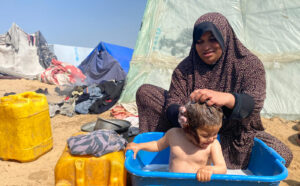
The only power that can restrain Israel is the United States. It is, however, true that American Presidents since Harry Truman have started using this issue for domestic political agenda, as the maximum number of Jews in the world reside in that country. The same trend was seen even during President Joe Biden’s era. It remains to be seen how far President Donald Trump would be able to restrain Prime Minister Netanyahu from causing further deaths of civilians in Gaza for rescuing hostages.
Many US presidents had also dealt with Israeli leaders sternly. In 1982, President Ronald Reagan firmly warned the then-Prime Minister Menachem Begin to desist from using cluster bombs on the civilian population in Beirut. He also stopped supplying cluster bombs to Israel. In 1989, Secretary of State James Baker, with full support from President H.W. Bush, gave “an unusually stern warning” to Israel to renounce its claims to territory seized in wars with neighbouring Arab nations.


